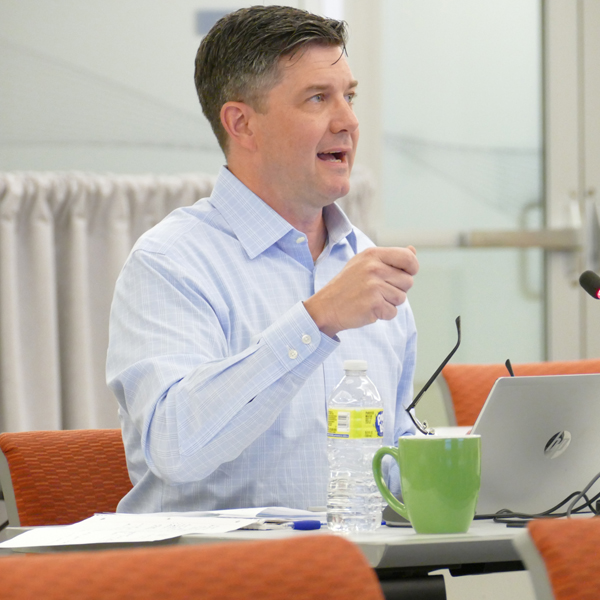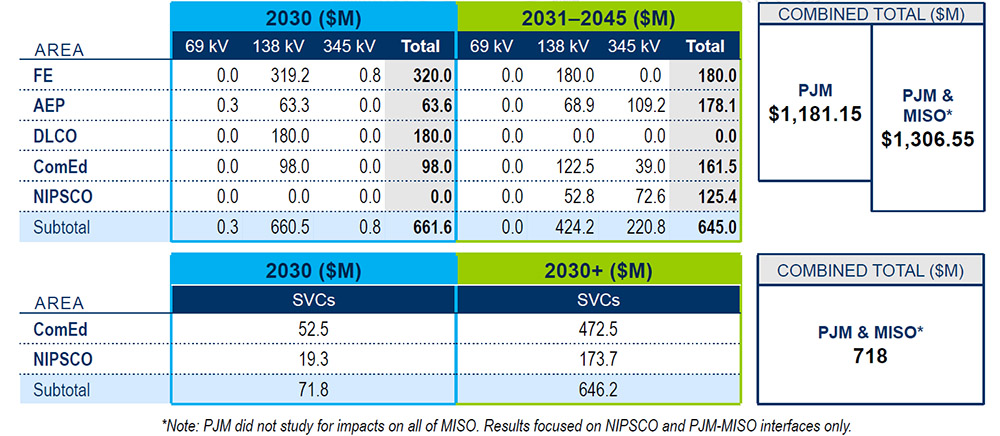PJM to Make Designated Entity Agreement Filing ‘Shortly’
VALLEY FORGE, Pa. — PJM attorney Pauline Foley provided a brief update on the RTO’s plans to make a Federal Power Act Section 206 filing asserting that the Operating Agreement’s provisions on designated entity agreements (DEAs) are unjust and unreasonable.
Foley said the RTO will assert that the OA’s references to DEAs are “overly broad and imprecise.”
PJM “anticipates making the filing shortly,” she said. “I don’t have an exact date.”
News of PJM’s planned filing prompted the cancellation of scheduled votes on competing issue charges on the matter at the July 27 Markets and Reliability Committee and Members Committee meetings. (See “Application of Designated Entity Agreement,” PJM MRC/MC Briefs: July 27, 2022.)
On July 26, a group of load-side stakeholders beat PJM to FERC, filing a complaint asking the commission to force the RTO to require incumbent transmission owners to sign DEAs on “immediate need” projects. The complainants contended the RTO has violated the OA by refusing to do so. (See PJM Challenged on Oversight of ‘Immediate Need’ Tx Projects.)
Generator Deliverability Test Update
Most stakeholders urged PJM to delay a vote on changes to generation deliverability testing procedures until the rules for effective load-carrying capability (ELCC) capacity interconnection rights (CIRs) are considered.
The deliverability test ensures the transmission system can transmit its generating capacity at summer peak load as well as under light load and winter conditions. The proposed changes are in response to increasing system variability caused by growing renewable penetration. (See “Generator Deliverability Education,” PJM Planning Committee Briefs: July 12, 2022.)
CIRs set an upper bound on the amount of installed capacity attributed to a generation capacity resource. ELCC resources such as renewables cannot run at their maximum output for more than 24 hours.
“It could be independent and should be independent,” Exelon’s Pulin Shah said of the two processes.
But other stakeholders — including Apex Clean Energy Group, LS Power, the PJM Public Power Coalition, Old Dominion Electric Cooperative, and economists Paul Sotkiewicz and Roy Shanker — said the issues should be considered together.
“I don’t see how it can be done separately,” said Shanker. “You could have a whole lot of [generation] that’s approved but not deliverable because of changes that happen two months later.”
“They need to go hand in hand,” said Sotkiewicz, of E-Cubed Policy Associates.
Carl Johnson, representing the PJM Public Power Coalition, said coupling the issues “creates the least uncertainty.”
PJM’s Jonathan Kern said the RTO is proposing to merge summer, winter and light load deliverability testing methods.
In June, the PC’s special session on CIRs for ELCCs discussed competing proposals from PJM, LS Power, Global Infrastructure Partners’ Eolian subsidiary and Sotkiewicz. The group originally planned a final review in July, but the meeting was postponed until late August to allow for more offline discussions to forge compromises. (See “‘Time to Get Involved’ in Capacity Interconnection Rights for ELCC Resources,” PJM Planning Committee Briefs: July 12, 2022.) New rules would be implemented for the 2025/26 Base Residual Auction.
The generator deliverability test changes would be made in Manuals 14A and 14B. They would add a new block dispatch approach to dispatch cases. To ensure a realistic dispatch, the base case would not allow any locational deliverability area (LDA) to import more power than their capacity emergency transfer objective (CETO).
The light load period, currently 12 to 5 a.m., would be redefined to include daytime hours from 10 a.m. to 3 p.m. where the RTO’s coincident peak load is between 40 and 60% of the annual peak. The default light load temperature would be 59 degrees Fahrenheit.
The new rules also will include more wind and solar in base case dispatches, with fixed solar rising from 38% to 47 to 55% of nameplate capacity in summer. Onshore wind would increase from 13% to 16 to 20%, and offshore wind would jump from 30% to 33 to 38%.
PJM wants stakeholder approval of the deliverability changes by December so they can take effect for the 2028 Regional Transmission Expansion Plan.
Load Model Selection Endorsed
Members unanimously endorsed PJM’s proposal to use a 2002-2012 load model for the 2022 Reserve Requirement Study.
PJM’s Patricio Rocha Garrido said the RTO changed its recommendation from the 2000-2010 model after discovering that a Monte Carlo simulation of the model “distorts the total distribution.”
The model selected is based on an analytical method rather than Monte Carlo sampling, he said. “At the 97th percentile and above, the Monte Carlo is not doing a good job.”
Sotkiewicz asked PJM to provide written language describing its algorithms “to avoid … confusion.”




